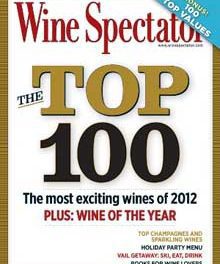Let’s go back to approximately 50 BC in the city of Cahors, France. The ever-thirsty Romans planted Malbec grapes there and the area survived quite well, eventually becoming an AOC (Appellation d’ origins controlee) in 1971. The plantings of Cahors have been wiped out twice; the first was during the phylloxera epidemic in 1883, and the second by frost in 1956.This is significant because after the 1956 incident the vines were replanted and Malbec came back stronger than ever.
The next step is to answer the question: How did Malbec get from France to Argentina? According to the newspaper called Vivino News, the answer lies with Argentina’s Provincial Governor Domingo Faustino Sarmiento, who realized Argentina lacked a formidable wine industry. The solution was obvious. Build a thriving wine industry in the image of France. To accomplish this, Governor Sarmiento hired a French agronomist named Miguel Pouget to bring grapevine cuttings from France.
Malbec was just one of the cuttings that Pouget brought with him. He planted the Malbec in the foothills of the Mendoza region. This region sits in the foothills of the Andes. The grapes thrived in this new climate and soil. Malbec quickly became Argentina’s most planted grape. Winemakers in Argentina took a liking to it, more than any other varietal, and while Argentina was still a long ways from making world-class wines, Argentina winemakers finally had a foundation to build upon.
Since 2007 the Interprofessional Wine Union Of Cahors has developed an association with Wines of Argentina, which is the agency in charge of promoting wines from Argentina at an international level. This same agency established April 17 as World Malbec Day.
I have written before about the success that Argentina had with the Mendoza region relative to Malbec. We know that by comparing Argentine Malbec with French Malbec, we get as clear an understanding of the meaning of Terroir as possible. Same grape, different soil. French Malbec will be savory, tart, firm tannins, plum, meat, and blackberry. Argentine Malbec will be fruit-forward, plummy, with a velvet texture.
Enter Paul Hobbs. With a two-pronged effort – one in France and one in Argentina – he set out to make the very best Malbecs that could be produced. He partnered with Bertrand Vigouroux whose family had been producing wine in Cahors, France since the 1860’s. In Cahors they produce a wine called Crocus, named for the flower that covers the countryside each spring. Pauls work with Malbec in Mendoza resulted in world-wide attention and provided inspiration for new styles to emerge. Needless to say, at the end of the day some pretty terrific Malbecs had been produced.
Now the Challenge of getting some Crocus or Bramare into our wine coolers. You can order it through the winery by getting on their email list. South Carolina is an authorized shipping state. I ordered some last year. I did not receive what I wanted because of an allocation limit, however what I did receive was superior to any Malbec I had ever consumed. You may also find it on Restaurant wine menu.
I recommend getting on Paul Hobbs email list. His newsletter is very informative. There is no question that you will be reading about the upper end of the wine spectrum. But at the same time you will find that the world of Paul Hobbs Wines includes Cabernet Sauvignon, Pinot Noir, Chardonnay, California grown Malbec, and reports that reflect boundless energy of world travel to wineries where Paul is consulting. This is how Paul Hobbs Makes his Mark. It usually pays handsome dividends.
Okay, you caught me! I am going to sneak in one last summer white. Last night I had a Meiomi Chardonnay. Blew me away. First of all, it was a surprise, a very pleasant surprise. I had stereotyped Meiomi as strictly a Pinot Noir house. For $16 I was drinking a wine that had many layers of flavor including honey, brown sugar, and some tropical fruit. Will definitely try it again.
WINESPEAK
Paul Hobbs’ website is first rate. It is very comprehensive and a challenge to read in one sitting. I strongly recommend you scope it out. You will find that all the wines have been sorted out and presented in such a way as to make it a learning center. I usually do not get excited about websites, however this time I did. So between the newsletter and the website you have plenty of homework to do.






